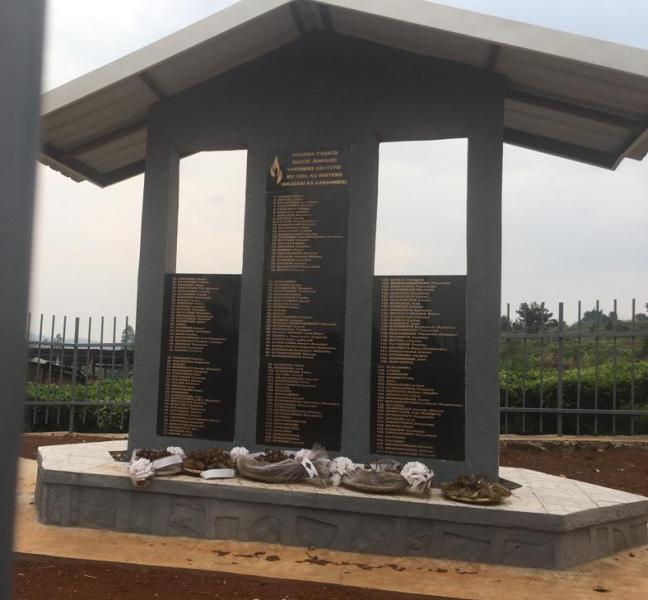The monument at Winteko relates the famous Tabaro from ‘abakurankota’ to the genocide

Monument with 171 names of genocide victims
The symbolic monument at former Winteko sector currently in Rusizi district, relates the famous Theodore Rukeratabaro mostly known as Tabaro from the family of ‘abakurankota’, to the atrocities of genocide against Tutsis of 1994 which particularly happened at Winteko.
According to a 62 years old Jean Damascene Gasarabwe, a genocide survivor from Winteko, the monument contains 171 names of genocide victims from the families of ‘abahire’, ‘abasate’ and ‘abakongezi’ who were massacred by the militias from ‘abakurankota’ led by Tabaro himself.
Gasarabwe says that they built that monument to that specific place for the historical reasons; for them to always remember their lost families, and for their children to never forget what happened.
Mapping Winteko during genocide
As it is described by Gasarabwe, during the genocide the place where the monument currently is, used to be a road block where the militia used to catch Tutsis from Nyakanyinya and Nyakarenzo, who were fleeing trying to reach the former Kamarampaka Stadium, and bring them to ‘brigade’ were Tabaro had a headquarter and bigger road block; this is where they used to judge either to kill or to send their victims in ‘blinde’.

“The ‘Blinde ’ was two close houses where they used to put Tutsis’ women after killing their husbands and male family members, and every night they used to come and pick some of them to rape during nights, after a long day of killings. The distance from ‘blinde’ to the road block was around 200m while the distance to the ‘brigade’ was around 500m; ‘blinde’ was way between two road blocks.” Gasarabwe added.
The myth of ‘abakurankota’
Gasarabwe explains that ‘Abakurankota’ were a big family among which the house of Mfizi, the ancestor of Tabaro belonged. Before the genocide, ‘abakurankota’ from Mfizi’s house believed to be the only Hutus and casted others away; they even formed the famous UBEMFI movement (Ubumwe bwa BEne MFizi) which means the union of Mfizi’s family.
“During the genocide against Tutsis of 1994, ‘abakurankota’ from Mfizi’s house who lived at Winteko became militias who killed many Tutsis while ‘abakurankota’ from other houses were being killed as Tutsis wherever they were.” Gasarabwe added.
Tabaro’s end
The famous Tabaro who led many killings at Winteko and other surrounding areas during the genocide against Tutsis of 1994, was sentenced to life imprisonment by the Stockholm’s Sevea court of appeal in Sweden, the trial that started on November 9, 2018 and was closed on March 30, 2019; and the judgment was pronounced on April 29, 2019.
Despite this sentence not being able to bring back their lost families, the genocide survivors from former Winteko appreciate that the justice was at least done.

